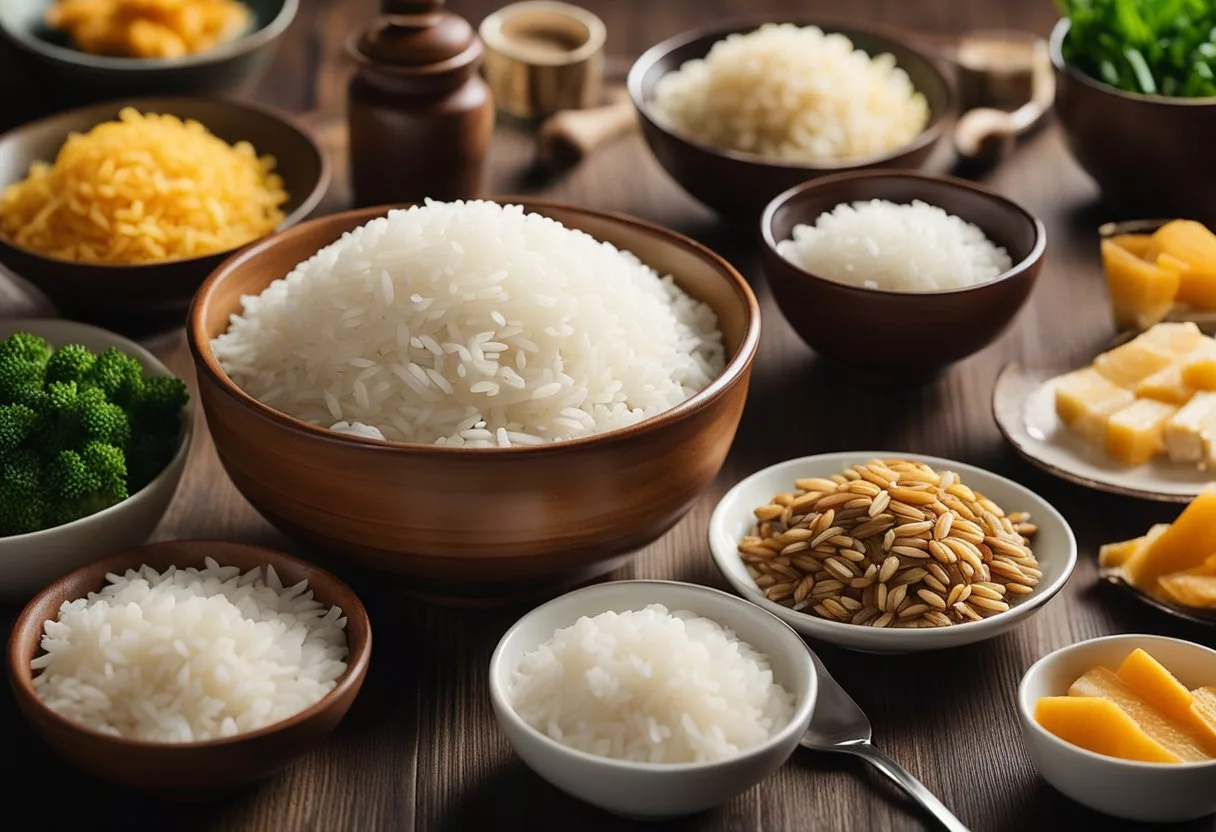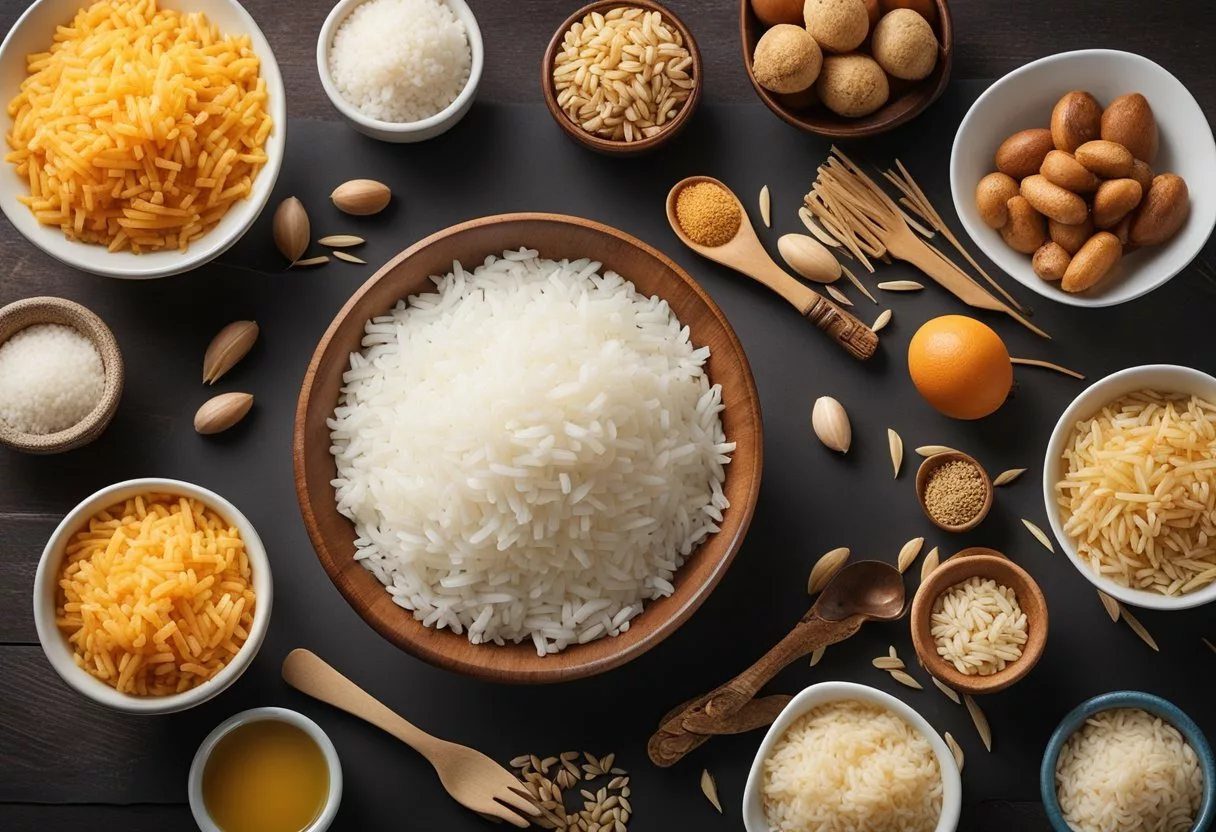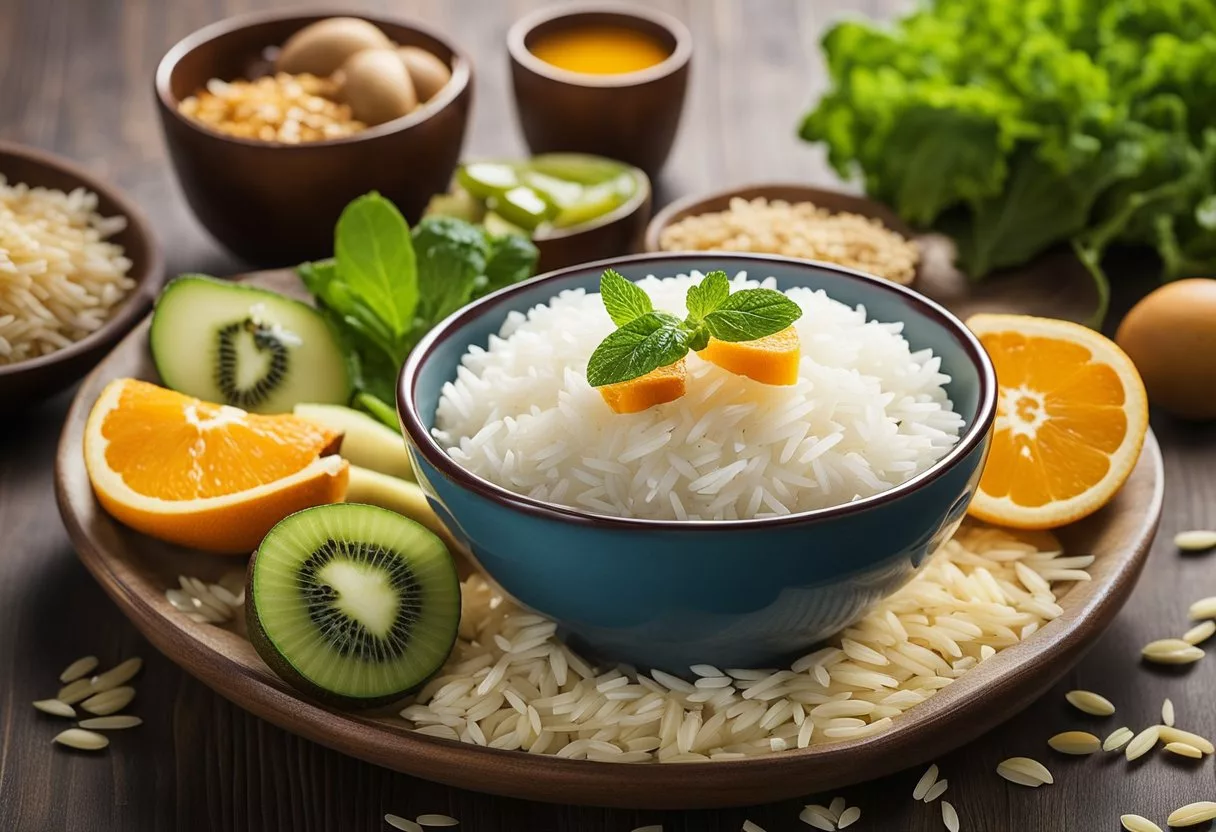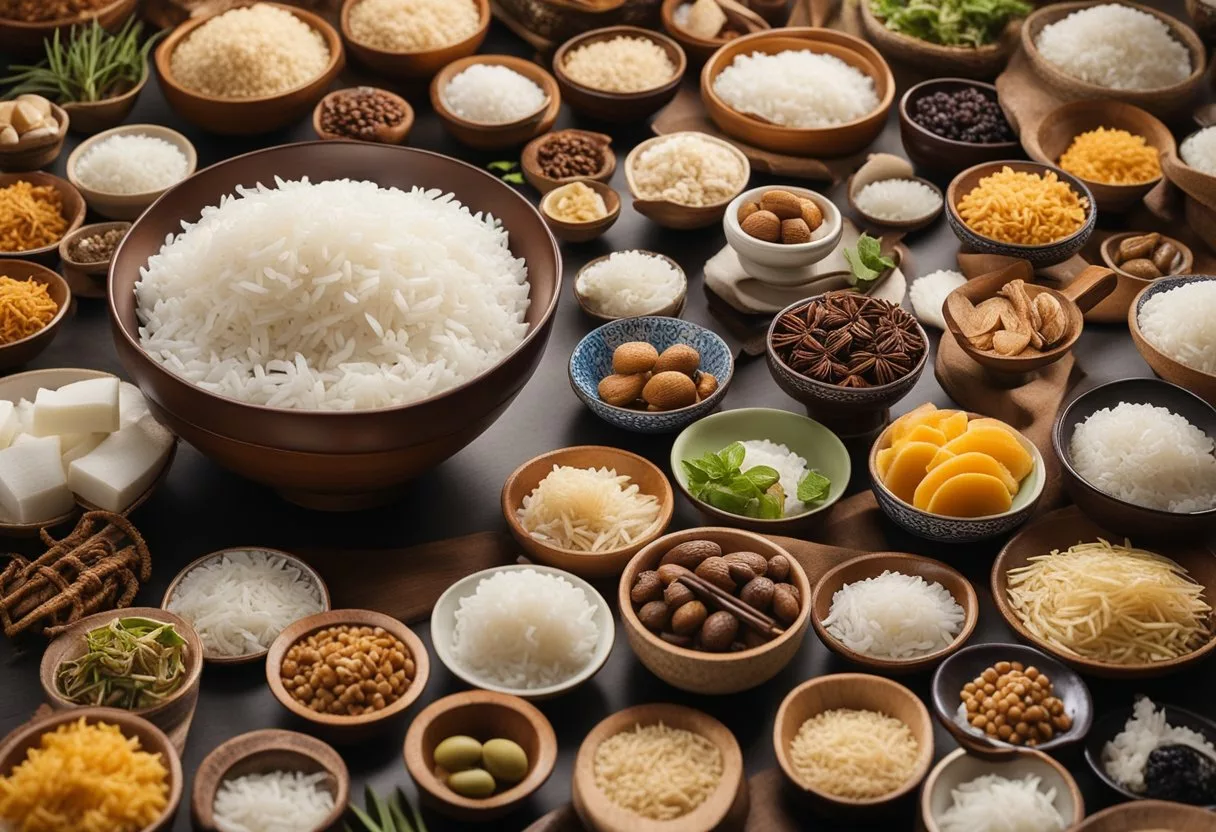Eating rice is a staple in many cultures, and it remains a popular food choice for millions of people worldwide. Rice is a versatile grain that can be cooked in many different ways and paired with a variety of dishes. But what happens to your body when you eat rice every day?

Rice is a complex carbohydrate that provides essential vitamins, minerals, and energy-boosting carbohydrates. Depending on the variety, rice can also be an excellent source of gut-health-supporting fiber. However, like any food, eating rice in excess over time can lead to weight gain.
While rice is a nutritious food choice, there are some potential risks associated with eating it every day. For example, eating white rice every day could increase the risk of developing Type-2 diabetes, according to a study published in the journal BMC Public Health. Additionally, consuming white rice regularly may also increase the risk of heart disease, as noted by the American Journal of Clinical Nutrition.
Nutritional Profile of Rice

Rice is a staple food for many cultures around the world. It is a grain that is rich in carbohydrates and provides a good source of energy. Rice is also a good source of fiber, which can help to promote healthy digestion and reduce the risk of certain diseases.
Macronutrients in Rice
Rice is primarily composed of carbohydrates, with a small amount of protein and fat. Brown rice is a whole grain and is therefore more nutrient-dense than white rice. Brown rice is also higher in fiber, protein, and other essential nutrients. However, white rice is often fortified with vitamins and minerals to make up for the nutrients lost during processing.
Vitamins and Minerals
Rice is a good source of several vitamins and minerals, including magnesium, iron, phosphorus, and selenium. Brown rice is also a good source of folate and other B vitamins. These vitamins and minerals are essential for maintaining good health and preventing nutrient deficiencies.
Differences Between Rice Varieties
The nutritional content of rice can vary depending on the type of rice. Brown rice is a whole grain and is therefore more nutrient-dense than white rice. Brown rice is also higher in fiber, protein, and other essential nutrients. However, white rice is often fortified with vitamins and minerals to make up for the nutrients lost during processing.
Overall, rice is a nutrient-dense food that can provide many health benefits. It is a good source of energy, fiber, vitamins, and minerals. However, it is important to choose whole grain rice, such as brown rice, to maximize the nutritional content of this food.
Health Impacts of Eating Rice Daily

Rice is a staple food for many people around the world, but what happens to your body if you eat rice every day? In this section, we will explore the health impacts of eating rice daily, including its effects on glycemic index, cardiovascular health, weight management, digestive health, and risks of heavy metals.
Glycemic Index and Blood Sugar Levels
Rice is a high-carbohydrate food that can have a significant impact on blood sugar levels. The glycemic index (GI) is a measure of how quickly carbohydrates in food raise blood sugar levels. Foods with a high GI, such as white rice, can cause a rapid increase in blood sugar levels, while foods with a low GI, such as brown rice, can help regulate blood sugar levels.
Cardiovascular Health
Eating rice every day may have an impact on cardiovascular health. Some studies have suggested that high rice consumption may increase the risk of heart disease due to its high carbohydrate content. However, other studies have found that rice consumption may have a protective effect on heart health due to its high fiber content.
Weight Management
Rice is a calorie-dense food that can contribute to weight gain if consumed in large amounts. However, the type of rice consumed can make a difference in weight management. Brown rice is a whole grain that is high in fiber, which can help promote feelings of fullness and reduce overall calorie intake. White rice, on the other hand, is a refined grain that is low in fiber and may contribute to weight gain.
Digestive Health
Rice is a good source of resistant starch, which can promote digestive health by feeding beneficial gut bacteria. However, rice consumption may also have some negative effects on digestive health. Some studies have suggested that high rice consumption may increase the risk of type 2 diabetes due to its high carbohydrate content.
Risks of Heavy Metals
Rice is known to accumulate heavy metals, such as arsenic, from the soil in which it is grown. Long-term exposure to high levels of arsenic can increase the risk of cancer, heart disease, and other health problems. To reduce the risk of heavy metal exposure, it is recommended to consume a variety of grains and to rinse rice thoroughly before cooking.
In conclusion, while rice can be a healthy and nutritious food, it is important to consider the type and amount of rice consumed to avoid negative health impacts. Incorporating a variety of grains into the diet, such as quinoa, barley, and millet, can provide a range of nutrients and reduce the risk of heavy metal exposure.
Rice in a Balanced Diet

When it comes to incorporating rice into a balanced diet, there are a few things to keep in mind. Here are some tips to help you make the most of this staple food:
Incorporating Rice with Other Foods
While rice can be a great addition to any meal, it’s important to pair it with other nutrient-dense foods to make sure you’re getting a balanced diet. Consider adding vegetables and fruits to your rice dishes to increase their nutrient content. Whole grains like quinoa, bulgur, and amaranth are also great options to add variety to your diet.
Portion Control and Serving Size
It’s important to pay attention to serving sizes when it comes to rice. A typical serving size is about 1/2 cup of cooked rice, which contains around 100 calories. To make sure you’re not overeating, measure out your portions and consider using smaller plates to help control your portions.
Alternatives to White Rice
While white rice is a common staple food, there are other options to consider. Brown rice is a whole grain and is a great source of fiber and micronutrients. Basmati and wild rice are also great options to add variety to your diet. Enriched rice is another option that has been fortified with nutrients like iron and folic acid.
Incorporating rice into a balanced diet can be a great way to get the health benefits of this nutrient-dense food. By pairing it with other nutrient-dense foods, paying attention to serving sizes, and considering alternative options, you can make the most of this versatile food. Plus, rice is a low GI food and a good source of potassium, making it a great addition to any diet.
Cultural and Global Significance of Rice

Rice is a staple food in many parts of Asia and has been a significant part of their culture for centuries. It is estimated that over half of the world’s population consumes rice as a staple food [1]. In many Asian cultures, rice holds a special place in their traditions and rituals. It symbolizes life, fertility, and prosperity, and is often associated with spiritual beliefs.
Rice as a Staple Food in Asia
For many people in Asia, rice is the main source of carbohydrates and provides the necessary energy for their daily activities. Rice is an essential part of their diet, and it is consumed in various forms such as steamed, boiled, fried, and even fermented. In Japan, rice is often served with miso soup and pickled vegetables, while in Thailand, it is commonly used in stir-fries and curries [2].
Rice Varieties and Their Uses in Cuisine
There are many varieties of rice available, each with its unique flavor and texture. Basmati and jasmine rice are popular for their fragrant aroma and are often used in biryanis and curries. Arborio rice is used in risottos, while black rice is used in desserts and sushi [3]. In many cultures, rice is not just a staple food but also has cultural significance. For example, in Japan, rice is used to make sake, a traditional alcoholic beverage.
Rice is also a significant crop globally, and it is estimated that over 480 million tons of rice are produced annually [4]. Oryza sativa is the most commonly grown variety of rice, and there are over 40,000 varieties of rice grown around the world [5]. Rice is not just a staple food, but it is also an important crop for many countries, providing employment opportunities and contributing to their economy.
In conclusion, rice is a staple food in many parts of the world, particularly in Asia. It has cultural significance and is consumed in various forms in different cuisines. With its many varieties and uses in recipes, rice is an essential ingredient in many diets globally.
References:
- CBC News. The cultural significance of rice.
- Eat For Longer. The Role Of Rice In Various Asian Cultures And Cuisines.
- Parliament Rice. Rice and Cultural Significance: Symbolism and Rituals.
- PubMed. Rice: Importance for Global Nutrition.
- FAO. Rice Varieties.
Environmental and Safety Considerations
Impact of Rice Cultivation on Soil and Water
Rice cultivation is a water-intensive crop that requires a lot of water for growth. This can have a significant impact on the availability of water resources in areas where rice is grown, especially during droughts. Additionally, the use of fertilizers and pesticides in rice cultivation can lead to soil and groundwater contamination. However, there are sustainable rice cultivation practices that can help mitigate these environmental impacts. For example, the System of Rice Intensification (SRI) is a set of practices that can help farmers reduce their use of water, fertilizers, and pesticides while increasing their yields.
Food Safety and Rice Consumption
Rice is generally considered a safe food to consume. However, there are some food safety concerns associated with rice consumption. One concern is the presence of arsenic in rice, which can accumulate in rice grains from contaminated soil and water. Long-term exposure to high levels of arsenic can increase the risk of cancer and other health problems. To reduce the risk of arsenic exposure, it is recommended to rinse rice thoroughly before cooking and to cook rice with a higher water-to-rice ratio. Another concern is the risk of foodborne illness from improperly cooked rice. To reduce the risk of foodborne illness, it is important to cook rice thoroughly and to store cooked rice properly.
In conclusion, while there are some environmental and safety considerations associated with rice cultivation and consumption, there are also sustainable practices and guidelines that can help mitigate these concerns. By following these guidelines and supporting sustainable rice cultivation practices, individuals can enjoy the health benefits of rice while minimizing their impact on the environment and ensuring their safety.